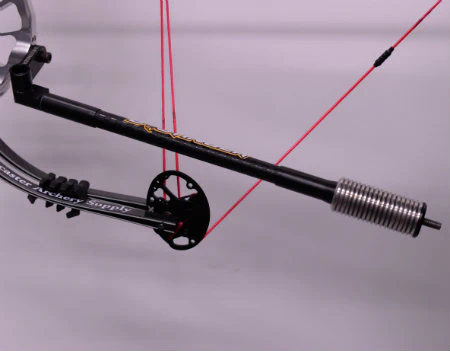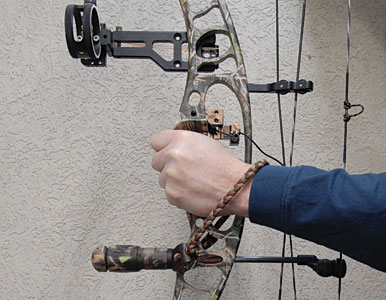Top Picks: Expert-Approved Compound Bow Stabilizers for each Budget plan
Top Picks: Expert-Approved Compound Bow Stabilizers for each Budget plan
Blog Article
Maximizing Your Archery Performance With the Right Compound Bow Stabilizer: an Extensive Summary
In the realm of archery, consistency and precision are vital to attaining optimum performance. One important yet often-overlooked element in boosting precision is the compound bow stabilizer. This simple device plays a substantial duty in steadying your purpose, minimizing bow torque, and taking in vibrations. However, the performance of a stabilizer pivots on different elements, including weight, style, and placement. By comprehending the nuances of choose and enhancing a substance bow stabilizer, archers can tweak their tools to raise their shooting experience to brand-new degrees of efficiency and control.
Value of Bow Stabilizers in Archery

Additionally, bow stabilizers assist in stabilizing the weight distribution of the bow, which can enhance the archer's security while firing and intending. By adding weight to the front of the bow, stabilizers can minimize the quantity of torque experienced upon release, leading to a smoother and more controlled shot - compound bow stabilizer. This weight circulation also helps in holding the bow constant for a longer period, enabling the archer to intend more precisely
Sorts Of Substance Bow Stabilizers
When thinking about the different sorts of substance bow stabilizers available, it is necessary to understand their unique attributes and functions to identify one of the most ideal option for making the most of archery performance. One of the most common types of substance bow stabilizers include sidebar stabilizers, front stabilizers, and back stabilizers. Sidebar stabilizers affix to the sides of the riser and help in balancing the bow during the aiming process. Front stabilizers, likewise called lengthy poles, are affixed to the front of the riser and help in soaking up and lowering any kind of resonances brought on by the launch of the arrowhead, hence boosting precision. Back stabilizers, additionally called rear stabilizers, are installed to the back of the bow and aid in counteracting the weight of various other devices, causing boosted security and consistent intending. Furthermore, some stabilizers include adjustable weights that allow archers to fine-tune the equilibrium and feeling go to the website of their bows according to their choices, making them flexible options for archery enthusiasts of all degrees.
Variables to Consider When Picking
In examining compound bow stabilizers, comprehending the unique functions and functions of each type is important for making a notified choice on the most appropriate choice to improve archery performance. When choosing a stabilizer, one must consider the weight of the stabilizer itself. By very carefully assessing these variables, archers can pick a compound bow stabilizer that straightens with their shooting style and maximizes their total performance on the archery array.
Installment and Change Tips
For optimal efficiency and precision in archery, understanding the installation and change of your bow stabilizer is vital. Proper setup begins with connecting the stabilizer to the bow's riser, ensuring it is securely safeguarded.
When adjusting the stabilizer, start with small incremental modifications instead than radical adjustments. Pay attention to exactly how the bow reacts to modifications in stabilizer setups and make changes accordingly. Frequently check the stabilizer's tightness and overall condition to ensure it continues to function ideally.
Upkeep and Treatment Standards

It is also necessary to keep your bow with the stabilizer in a safe and secure and secure place when not in use. Avoid leaving it in severe Source temperature levels or subjected to direct sunshine for extensive periods, as this could create damages to the stabilizer. Regularly check the stabilizer's placement to guarantee it is still correctly positioned on your bow. Adhering to these maintenance and care standards will aid you obtain the most out of your bow stabilizer and boost your general archery performance.
Conclusion
Finally, choosing the best compound bow stabilizer is essential for maximizing archery performance. Understanding the significance, types, elements to consider, installment and adjustment pointers, in addition to upkeep and care standards can significantly influence one's accuracy and uniformity in capturing. By selecting a stabilizer that fits specific needs and choices, archers can boost their overall efficiency and attain better results on the array or in competition.
Bow stabilizers play a vital role in improving an archer's precision and uniformity by reducing vibrations and supporting the bow throughout the launch of an arrowhead - compound bow stabilizer.Additionally, bow stabilizers assist in stabilizing the weight circulation of the bow, which can boost the archer's stability while aiming and shooting. The most usual types of compound bow stabilizers include sidebar stabilizers, front stabilizers, and back stabilizers. Back stabilizers, likewise called back stabilizers, are placed to the back of the bow and aid in counterbalancing the weight of other accessories, resulting in enhanced stability and consistent intending. Find Out More When picking a stabilizer, one have to consider the weight of the stabilizer itself
Report this page